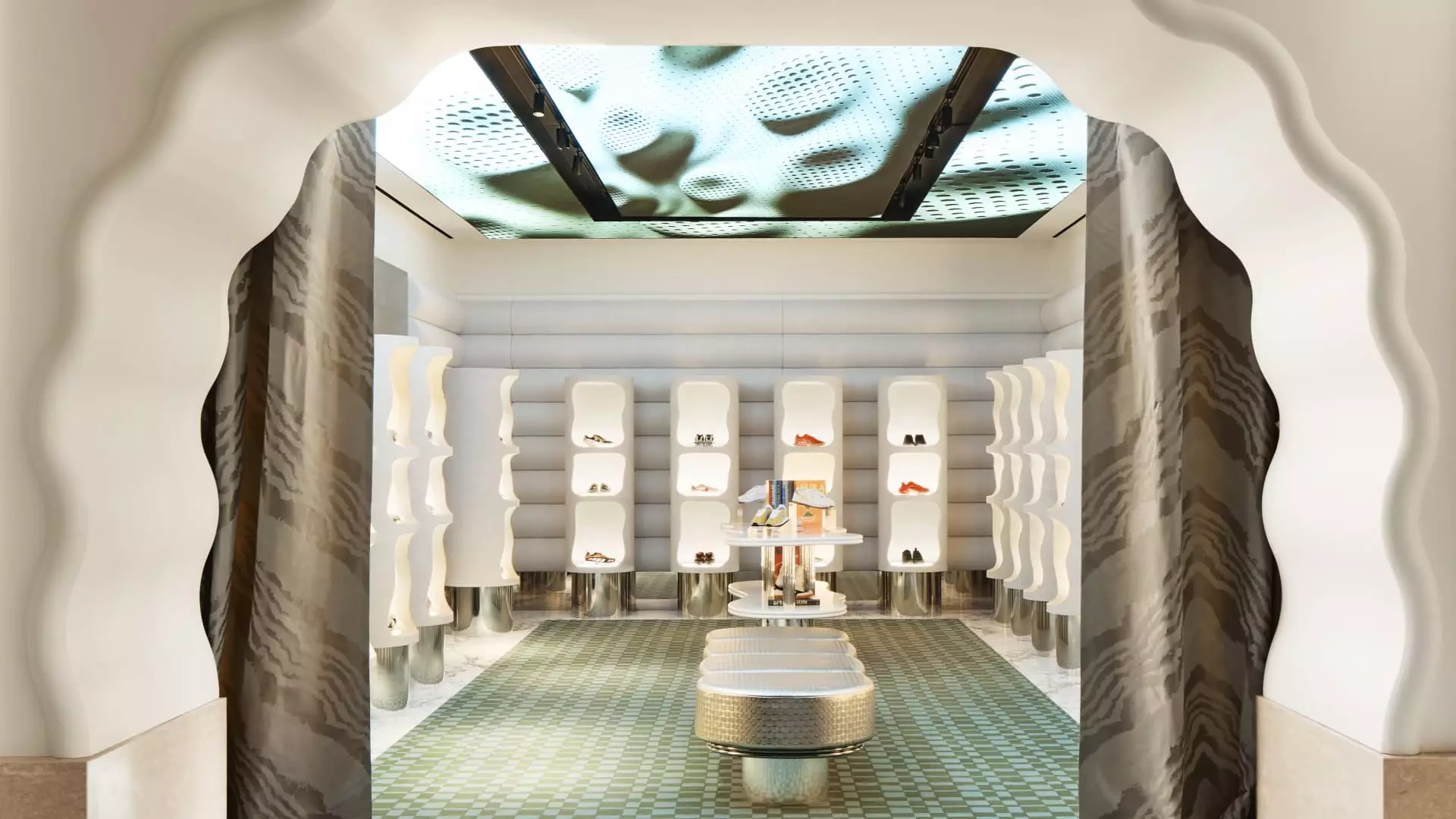Printemps, an iconic French luxury retailer, has officially planted its flag in the United States with a grand opening in New York City’s Financial District. This significant move, coinciding with the arrival of spring, marks a new chapter for the 158-year-old brand known for its breathtaking offerings and unique shopping experience. Spanning an expansive 55,000 square feet, the store embodies a blend of Parisian charm and modern luxury features that aim to attract both affluent patrons and everyday shoppers. This ambitious project indicates not only Printemps’ commitment to upscale retailing but also the increasing expectations consumers hold for experiential shopping environments, especially in a market cautiously recovering from economic fluctuations.
The Architecture of Experience
One of the most striking aspects of the Printemps store is its architectural allure. The design resembles a contemporary take on a Parisian apartment, creating a sense of intimacy that starkly contrasts with the cold, sterile environments often found in other luxury retailers. The store has been infused with artistry that might even make Louis Vuitton envious, highlighted by installations like the “Red Room.” This Art Deco space, meticulously restored, offers shoppers an immersive experience—visitors can wander through a “shoe forest” and sip wine, combining the sensory pleasure of fashion with that of a fine dining atmosphere. Such a design invites customers to linger, create memories, and forge emotional connections with the brand, in stark opposition to the transactional nature found in many high-end stores today.
The Challenge of a Slowing Luxury Market
Despite the salon-worthy aesthetics and ambitious offerings, Printemps launches in a precarious economic landscape where luxury spending has noticeably slowed. Economic uncertainty, inflation, and shifting consumer priorities have created a challenging backdrop for the high-end retail sector. Reports forecast a modest growth of only 1% to 3% annually for global luxury markets through 2027. The faltering demand among Chinese consumers and the cautious financial decisions of wealthier Americans demonstrate that even the most aspirational market segments are not immune to broader economic issues. Printemps’ strategy to appeal to the resilient American consumer reflects both recognition of these risks and an ambitious attempt to convert luxury into accessibility through careful merchandising choices.
Curating Accessibility Amid Luxury
In his vision, Printemps CEO Jean-Marc Bellaiche emphasizes a blend of accessibility alongside luxury. Where many high-end retailers may overlook broader consumer appeal in an exclusive chase for wealthier clientele, Printemps has shrewdly positioned itself to cater to diverse tastes and budgets. The inclusion of more approachable merchandise aims to attract not just the elite but also tourists and casual consumers. This balanced approach recognizes the necessity for brands to evolve in a region where luxury can be perceived as both a status symbol and an aspirational goal. This store features items that invite shoppers to engage without the intimidating price tags often associated with luxury goods.
Competing with Cultural Giants
As Printemps looks to make its American mark, it not only contends with local boutiques and heritage brands like Tiffany & Co. but also international players that are expanding their reach. Retailers like Primark and Mango demonstrate that affordable fashion also thrives in the U.S. market. Therefore, Printemps’ challenge lies in how effectively it can communicate its unique value proposition—to be a destination that transforms shopping into an immersive journey while providing exclusive brand access. The Italian word “sprezzatura,” which connotes effortless elegance, encapsulates Printemps’ ambition in navigating the competitive landscape: blending accessible luxury with a delightful in-store experience devoid of snobbery.
Future Aspirations in Uncertain Times
Printemps’ ambitious expansion into the U.S. is a gamble; while Americans rank as the third-largest buyers of its luxury goods, the saturation of the luxury market, paired with changing consumer behavior, poses formidable risks. Bellaiche notes that American sales have tripled from 2019 to 2024, affirming the brand’s relevance in the evolving retail terrain. However, the optimism must be paired with caution—recognizing both the allure of the brand and the fickle nature of consumer sentiment in a time marked by economic upheaval. The introduction of fine dining within the store indicates a desire to create a lifestyle brand, encouraging shoppers to view Printemps as a holistic experience rather than just a shopping venue.
Through these bold moves, Printemps exemplifies how an established brand can adapt and thrive amid challenging circumstances, proving that with audacity, vision, and a touch of French flair, even old-world elegance can find a shining place in the heart of modern America.

Leave a Reply